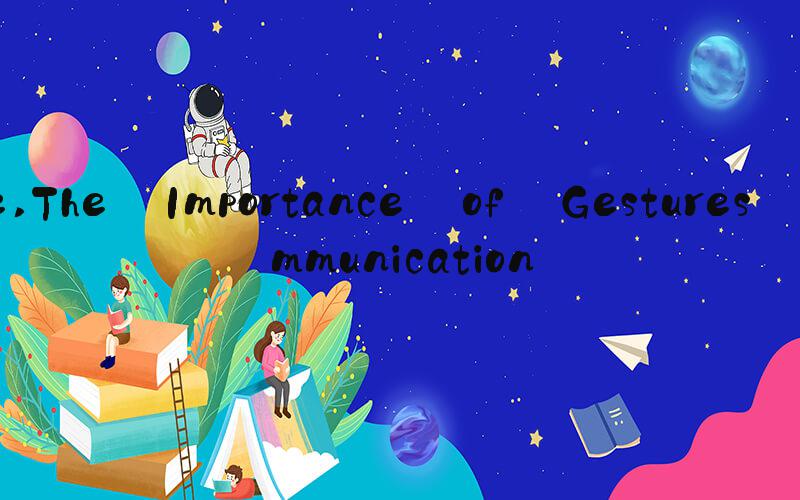
 Gesture - A Powerful Form of Communication
Gesture - A Powerful Form of CommunicationAs humans, we often rely on nonverbal communication to convey our thoughts, feelings, and intentions. One of the most crucial components of nonverbal communication is gesture. Gesture refers to the deliberate movements of the hands, arms, head, or body to emphasize a point, show emotion, or express a message.
The Importance of Gestures in CommunicationGestures play a vital role in communication as they help individuals convey their message more effectively. For instance, when we are speaking, we often use hand gestures to emphasize or clarify a point. This can help our audience understand the message better and even make it more memorable. Moreover, gestures can convey emotion, which can be particularly useful in situations where spoken words are not enough.
Gestures can also vary depending on the cultural context. For instance, a thumbs-up gesture is a sign of approval in Western cultures, but it can be considered offensive in some Asian cultures. Therefore, it is essential to understand cultural differences when using gestures in communication.
The Science Behind GestureResearch has shown that gestures are closely linked to language processing and comprehension. When we speak, our brains automatically produce both verbal and nonverbal cues. These cues work together to create meaning and help us convey our message more effectively.
Moreover, gestures can even affect the way we think and remember information. A study published in the journal "Psychonomic Bulletin & Review" found that when individuals were encouraged to use hand gestures while learning a new task, they were better able to remember the information later on.
The Use of Gesture in Public SpeakingIn public speaking, gestures play an essential role in engaging the audience and conveying the message effectively. A skilled speaker uses gestures to emphasize key points, create a sense of connection with the audience, and add a visual element to their speech.
However, it is important to note that gestures should be natural and not forced. For instance, waving your arms around aimlessly can be distracting and diminish the impact of your message. Therefore, it is crucial to practice your gestures before speaking to ensure they are fluid and appropriate for the message you are conveying.
The Future of Gesture TechnologyGestures are not limited to communication in the traditional sense. In recent years, gesture technology has become increasingly popular, particularly in the fields of video gaming and virtual reality. With the help of sensors and cameras, individuals can use hand gestures to control devices, navigate virtual environments, and interact with digital content.
The potential uses for gesture technology go far beyond entertainment. In healthcare, gesture technology can be used to help individuals with disabilities or injuries navigate their environment more easily. In education, it can be used to create more interactive and engaging learning experiences. The possibilities are endless.
ConclusionGestures are a powerful form of nonverbal communication that can enhance our message, convey emotion, and create a sense of connection with our audience. With the use of technology, gestures are evolving and being used in new and innovative ways. Understanding the importance of gestures and how to use them effectively can help individuals communicate more effectively in a variety of settings.
